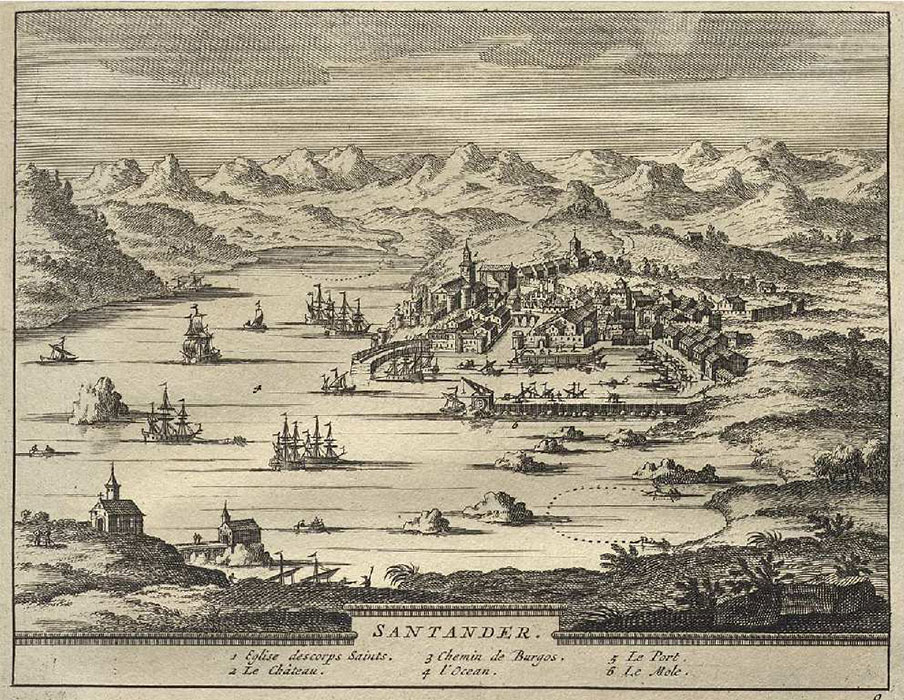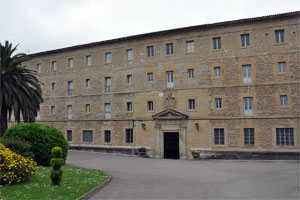Franciscans of San Vicente de la Barquera
(San Vicente de la Barquera, Cantabria)
This is a Franciscan convent of late foundation, established in 1454 thanks to a papal bull from Nicholas V, which granted the corresponding license to Friar Juan de la Trecha. Initially, it occupied the hermitage of Santa María de la Barquera, while a new house was being built, to which they moved in 1468, dedicating it to San Luis. The new location caused episodes of discord with the local residents. The house enjoyed the patronage of the Guevara family; this lineage, along with other noble families, contributed to the construction of several chapels in the church. The convent was closed due to confiscation of Mendizábal, and its buildings were looted. Today, only the ruins of the construction remain, mostly from the 16th century.
- ALONSO, Mathías (1734). Chronica seraphica de la santa provincia de la Purissima Concepcion. Valladolid: R. Chancillería
- ARIZAGA, Beatriz (1996). Villas: permanencias urbanas. La memoria històrica de Cantabria. Universidad de Cantabria
- ESCUDERO, María Eugenia (2005). Arquitectura y urbanismo de las Cuatro Villas de la Costa en la Edad Moderna. Tesi doctoral. Universidad de Cantabria
- TORREGO, Javier (2021). Documentación gráfica del Convento franciscano de San Luis es San Vicente de la Barquera. E.T.S. Arquitectura de Madrid
Monte Corbán / Santa Marina de Don Ponce
(Santander, Cantabria)
The origin of this house dates back to two hermitages located in the surroundings of Santander. The first of these was Santa Catalina, where five hermits had retreated. In 1406, they requested and obtained recognition from Pope Benedict XIII as a Jeronymite monastery. Nearby, on a small island, now disappeared, the canon Pedro Gutiérrez de Hoznayo established a second monastery in the hermitage of Santa Marina, known as Santa Marina de Don Ponce
The license for this second monastery was granted in 1407 by the Bishop of Burgos, Juan Cabeza de Vaca, and in 1411 it was recognized by the same Pope Benedict XIII. This house experienced rapid development. In 1416, the two small communities united at Santa Marina, but due to the inconveniences caused by its location, the resulting monastery was moved to Montecorbán in 1421. From the 16th century onwards, the monastery was gradually rebuilt, with the construction of a new church and cloister. At the end of the 18th century, a new Baroque-style cloister was erected. The monastery was exclaustrated in 1835 and later became the Corbán Seminary, a function it still maintains.
- MATEOS, Isabel; i altres (1999). El arte de la orden jerónima. Historia y mezenazgo. Iberdrola
- MAZA, Tomás (1940). Catálogo del Archivo del Antiguo Monasterio de Jerónimos de Santa Catalina de Monte Corbán. Santander: Centro de Estudios Montañeses
- REVUELTA, Josemaría (1982). Los jerónimos. Guadalajara: I. P. C. Marqués de Santillana
- SIGÜENZA, José de (1907). Historia de la Orden de San Jerónimo. Vol. I. Madrid: Bailly Bailiére
- SOLÓRZANO, Jesús Ángel (2002). Santander en la Edad Media. Universidad de Cantabria




